Managing Early-Game Food Efficiency in Stardew Valley
Stardew Valley is more than just a farming simulator; it’s a game about resource management and making the most out of your time and energy. One essential aspect that often perplexes newcomers is food efficiency. The right food not only restores energy but also plays a critical role in making your Stardew Valley life easier, especially during the initial days of gameplay.
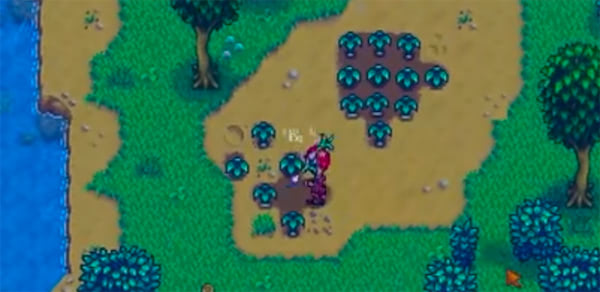
Day 1: Spring Onions and First Steps
On the very first day in the game, you can head to the southern forest to pick up some Spring Onions. These add 13 energy points and have a selling price of just 8 gold. This makes them highly cost-efficient for energy restoration. Eating a Spring Onion on day one can give you the extra energy needed to clear your farm, particularly removing sticks and stones around the trees. These obstacles can hinder the trees from spreading their seeds.
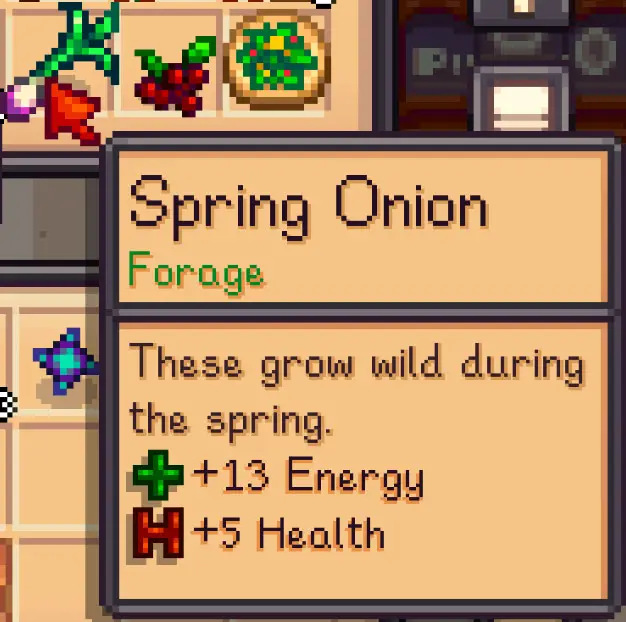
Additionally, the first day offers a chance to forage various spring items:
- Leeks: 60 gold and 40 energy
- Dandelions: 40 gold and 25 energy
- Wild Horseradish: 50 gold and 13 energy
While these foods offer good value for energy restoration, the selling prices are high enough that you might consider selling them to purchase a fishing rod and bait.
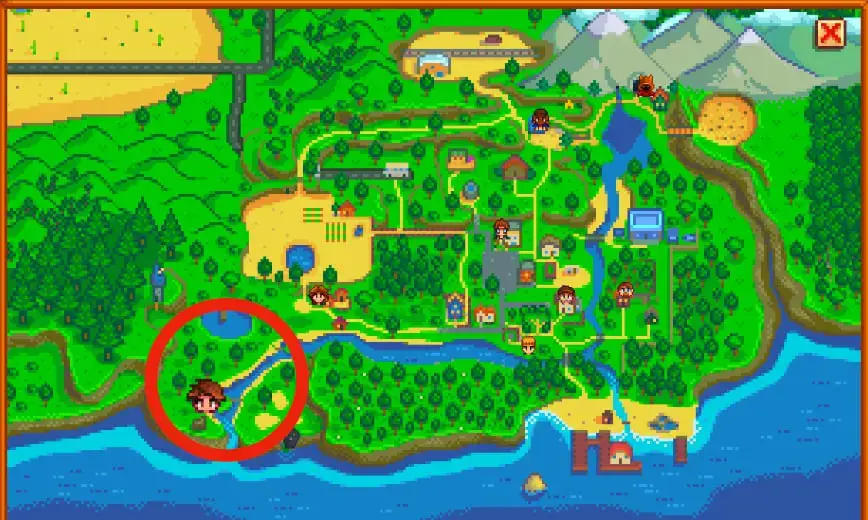
Efficiency Over Time
Starting day two, it becomes less cost-effective to forage Spring Onions. Time is a valuable resource, and you should measure efficiency in terms of time spent versus rewards gained. In other words, it’s not always about gold. If one activity takes one hour and another takes two for the same benefit, the former is obviously more efficient.
During early spring, aside from planting a small number of seeds, there’s not much to do. Repeatedly fishing can become tedious but is often the most efficient way to pass the time.
Fishing Choices and Seafood Options
If you opt for ocean fishing, reconsider eating the fish you catch. The cost-efficiency for restoring energy from ocean fish is typically low. Instead, consider selling them and buying Trout Soup, which offers a better energy-to-gold ratio. Seaweed and Cola are also good, but somewhat limited in availability. When river fishing, consider consuming Smallmouth Bass, which offers the highest energy-to-gold efficiency among river fish.
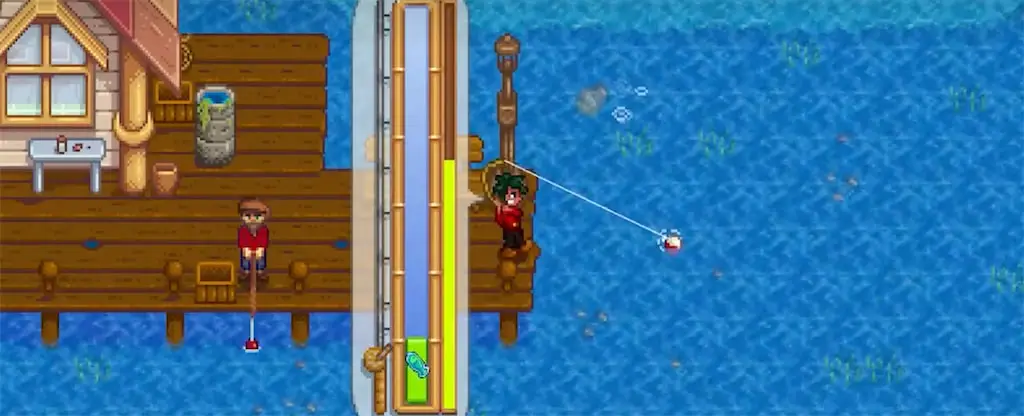
Mining, Cave Carrots, and More
Once you reach day 5, mining becomes available, offering another avenue for energy-restoring foods. Cave Carrots are a notable find, providing a decent amount of energy. Slimes also drop algae, which can be used in cooking.
![]()
![]()
Quality matters too. Higher quality fish like Iridium and Gold Star fish offer significantly more energy than their lower-star counterparts. Before you reach level 10 in fishing skills, consuming high-quality fish for energy can be more beneficial than selling them.
Foraging and Berries
Foraging can also be an effective way to restore energy. After reaching level 4 in foraging, you can pick two Salmonberries per bush. These berries offer an energy-efficient way to restore stamina and save time compared to fishing. The downside is that foraging doesn’t add to your foraging experience.

The Salad Option
Salad stands out as a highly efficient food item you can buy. Costing 220 gold and restoring 113 energy, the Salad is a solid investment for your mining expeditions or heavy farming days.
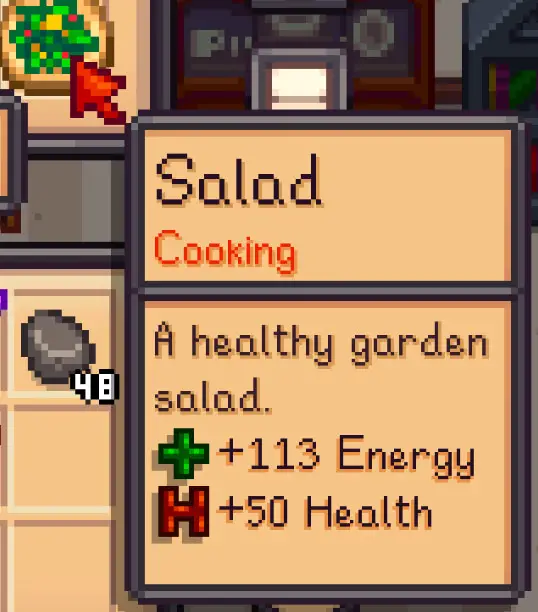
Foods to Avoid
- Field Snack: Made from 3 types of tree seeds, it adds 45 energy but the seeds are more valuable for tree planting.
- Bug Steak: Requires 10 Bug Meat and adds 45 energy, but the Bug Meat is better used to make fishing bait.
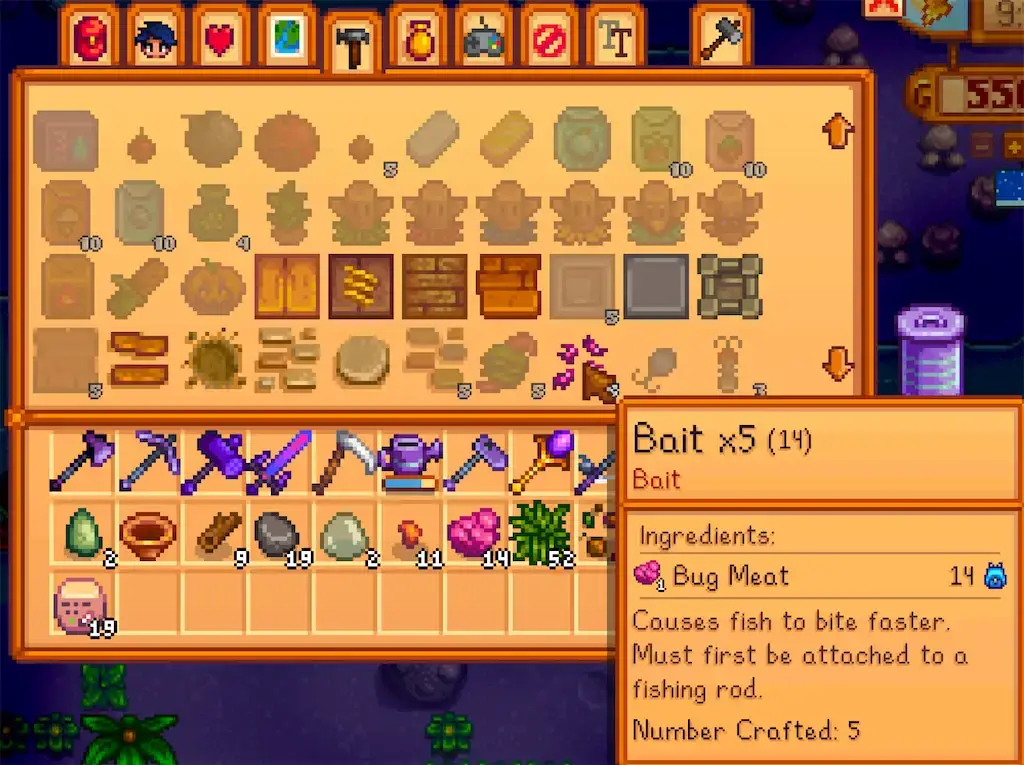
Special Considerations
- Tulips: Seemingly cost-effective but require farming operations and their farming experience gains are poor compared to other crops like Potatoes or Strawberries.
- Sashimi: Requires a recipe from Linus and three hearts of friendship, but by the time you acquire it, better energy options will likely be available.
![]()
![]()
Conclusion
Stardew Valley offers a plethora of food options, each with its pros and cons. Understanding the energy efficiency of these options can greatly assist you in managing your resources and time. If you have any other suggestions or strategies to share, feel free to leave a comment below.
So, go ahead and farm, fish, mine, and explore, but always keep an eye on your energy bar and make smart choices to ensure you’re getting the most out of your Stardew Valley experience.